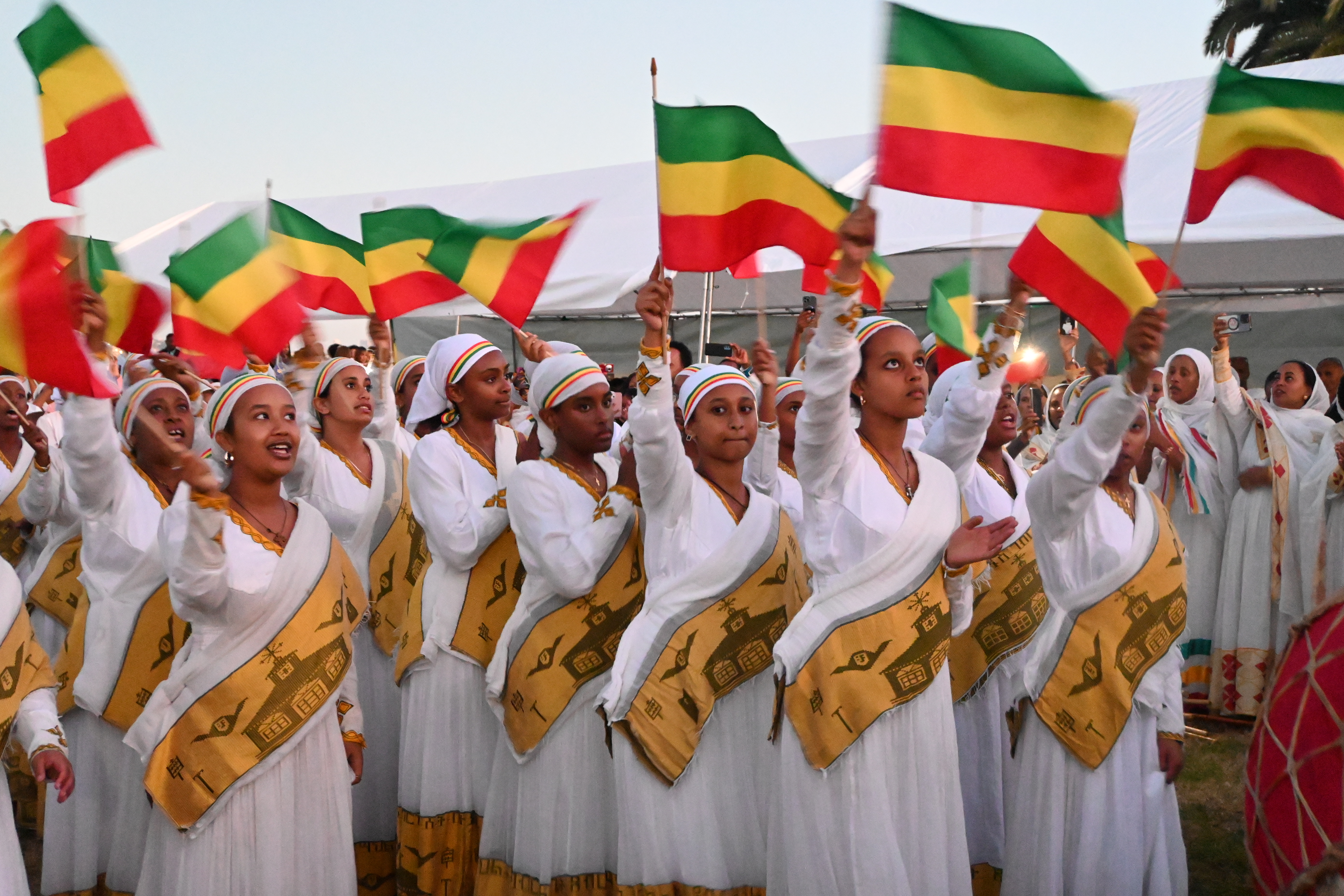
By Tihut Tamrat, Contributing Writer
Ski Beach on Ingraham St. lit up with fire as almost a thousand Ethiopians celebrated Meskel Demera commemorating the finding of the true cross, on the evening of Saturday, September 28th. The Ethiopian Orthodox Tewahedo Church Southern California and Alaska Diocese Southern California Timket and Meskel Organizing Committee hosted the celebration with huge beautiful white tents and Ethiopian food, injera and kitfo, to kick off this celebration of blessings.
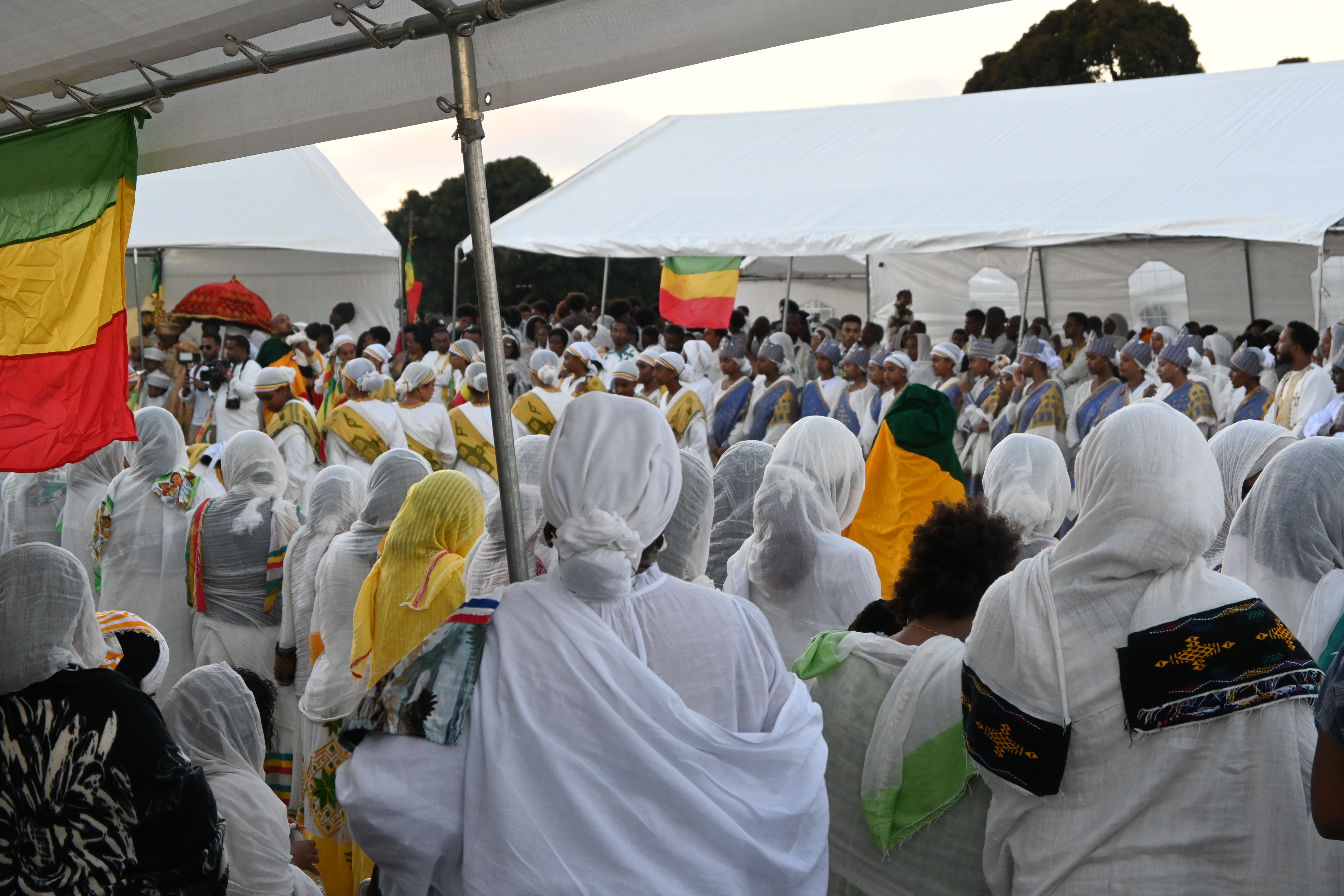
“People across Southern California—Riverside County, Orange County, LA, and San Diego—came together at Meskel Demera, bringing the Ethiopian community closer to celebrate our traditions,” said Habtamu Zewde, Riverside County resident and longtime church-goer, who was in attendance.
Arriving in Ethiopian traditional kemis dress with Meskel flowers atop women’s heads, grandparents, parents, kids, cousins, and family all gathered to give thanks to the Holy Trinity: God, Jesus, and the Holy Spirit. In addition, saints and angels, guides of the Holy Trinity, were also praised. Saint Helena, mother of Emperor Constantine, the one said to have found the True Cross upon which Jesus was crucified, was guided by a vision herself that led her to discover the cross which has been hidden by Jews for over 300 years. The story goes that Saint Helena had a revealing vision that instructed her to light a bonfire and follow the smoke to find the cross buried in Jerusalem.
The holiday is marked by the lighting of the Demera, bundles of twigs and branches with the Meskel (cross) on top. This symbolizes the triumph of the Cross, which transformed from a symbol of death and curse into one of salvation and spiritual freedom through the crucifixion of Jesus Christ. The tradition of lighting the branches symbolizes the light of Christ illuminating hearts, urging believers to live in the freedom and victory that the cross brings.
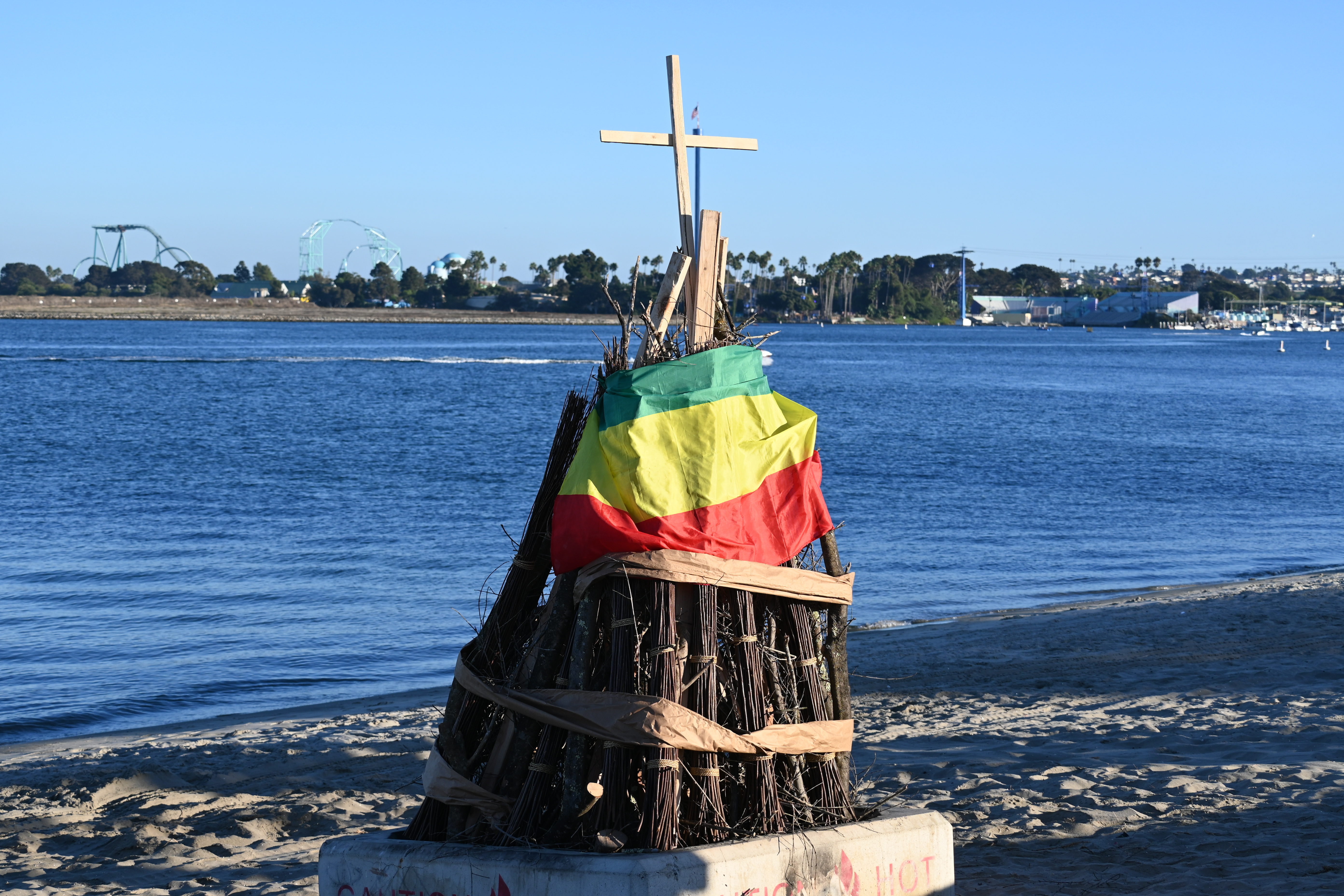
The celebration commenced with liturgy from Bishop Abuna Barnabas of the Ethiopian Orthodox Tewahedo Church. The liturgy was passed on to priests chanting and reciting in the language of ge’ez, a form of Latin, calling upon deacons, and the congregation to be prepared for prayer, praising God to allow them to get the cross back. The mezemeran (church choir) assembled together in formation to perform wereb, a particular style of worship that involves slow, rhythmic melodic chanting punctuated by the sound of the tsenatsel (sistrum) and complemented by back and forth movement to amplify the recitations.
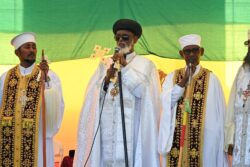
After the mezemeran performance, everyone converged together, headed by the clergy, to bring the now blessed fire to the Demera to replicate Saint Helena’s vision that brought her to the true cross, lighting it ablaze to allow the smoke to find the buried cross.
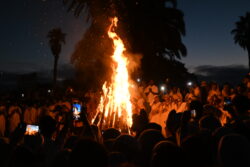
“The Meskel Demera Celebration is significant because it is a reminder of how Christ crucified himself for us to leave us on Earth with no sin. Meskel gives us the joyful celebration that symbolizes the triumph of the Cross and spiritual connection from Jesus’ resurrection,” affirmed Eliana Habtamu, Bible study student who has been attending the celebration ever since she was a child.
Although the cross has already been found since Saint Helena’s revelation, attendees picked up ashes from the fire and drew a cross on their forehead to carry the “found” cross with them as they continue on with their lives, now blessed by the Meskel Demera Celebration.


